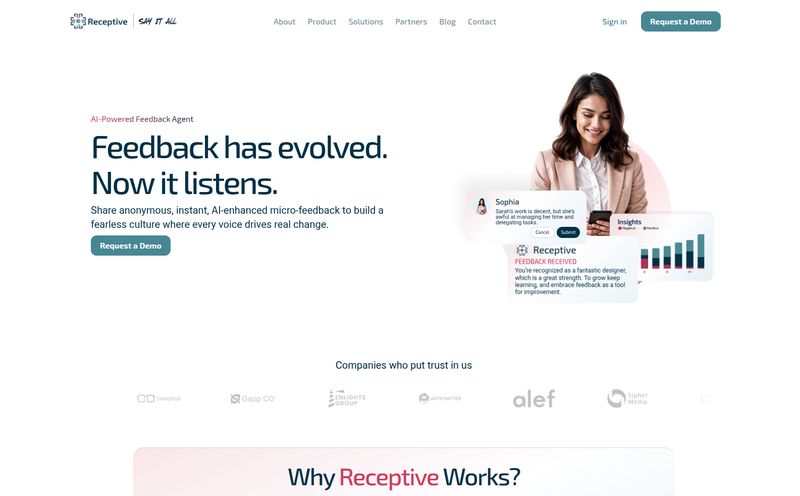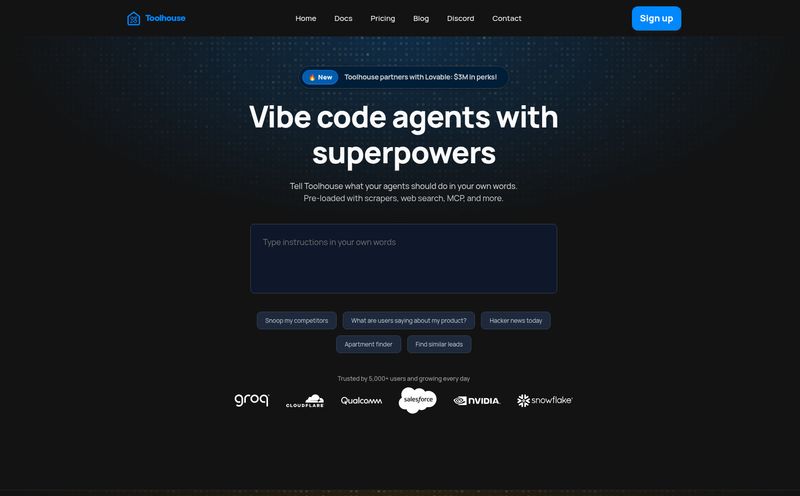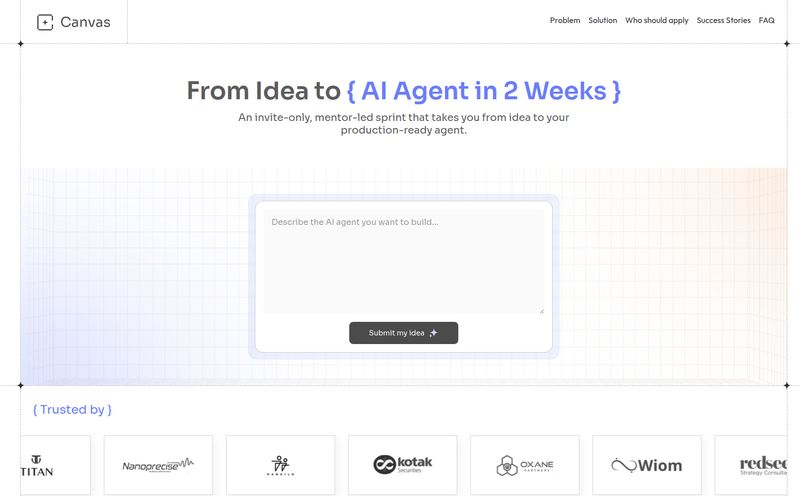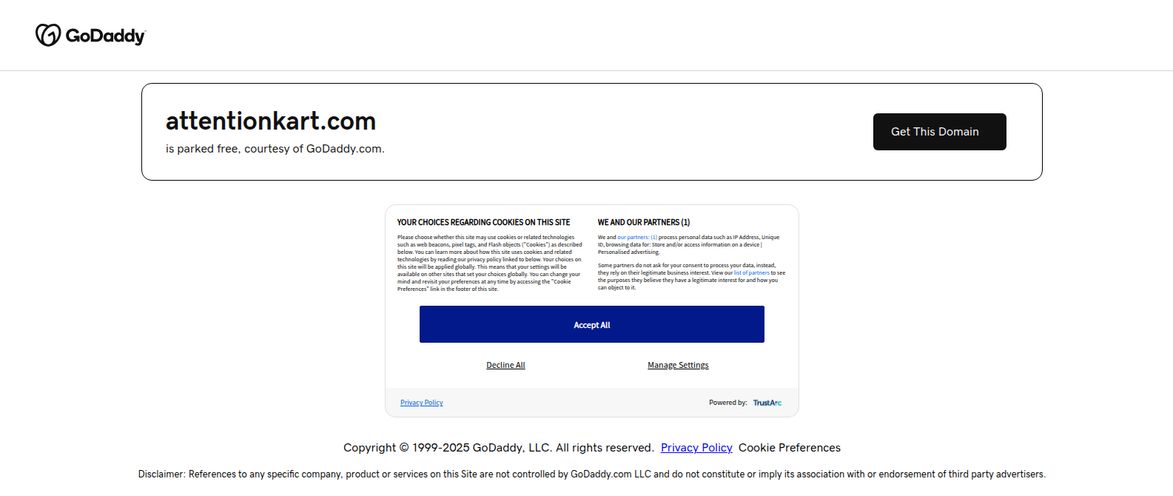For years, the world of data engineering has felt a bit like a members-only club. You needed the secret handshake—a mix of Python, SQL, and a high tolerance for cryptic error messages. If you were a marketer, an analyst, or a small business owner who just wanted to move data from point A to point B, you were usually out of luck. You had to file a ticket and wait. And wait.
I’ve been in the SEO and traffic game for a long time, and I can't tell you how many great ideas have died on the vine because getting the data was just too much of a hassle. It’s the perennial bottleneck. So when I see a tool that claims you can manage data pipelines just by having a conversation, my ears perk up. But my skepticism-meter also goes way up.
The tool in question is Ask On Data. It calls itself an open-source, chat-based data engineering tool powered by GenAI. The promise? To make data migration, cleaning, and transformation as easy as texting a friend. A pretty big promise. So, is it just another shiny object, or is there something real here?
So, What is Ask On Data, Exactly?
Think of it like this: Instead of writing complex scripts or clicking through a thousand menus in a traditional ETL tool, you just talk to it. You open a chat interface and type what you want to do in plain English. Something like, “Hey, take this customer CSV file, remove the ‘test’ accounts, and load it into my PostgreSQL database.”
It's basically a GenAI agent that understands Natural Language Processing (NLP) and translates your requests into the actual data operations. It’s less like operating heavy machinery and more like having a conversation with a very, very smart intern who is fluent in data-speak and never needs coffee breaks. The whole idea is to tear down the technical wall that surrounds data engineering.
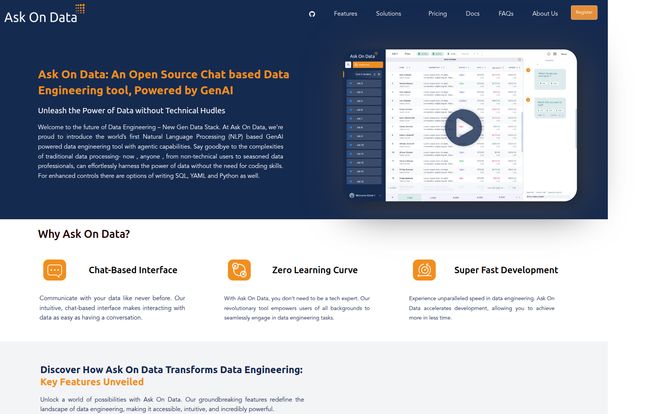
Visit Ask On Data
The Big Deal: A Chat Interface for Your Data
This chat-based approach is the core of what makes Ask On Data interesting. It’s not just a gimmick; it fundamentally changes the user experience. They claim a “zero learning curve,” which is a bold statement in our industry. I've seen 'user-friendly' tools that still required a week-long training course. But here, if you can ask a question, you can theoretically build a data pipeline.
For the Non-Techies and the Time-Crunched
This is obviously a huge win for folks who aren’t data engineers by trade. Marketing teams who want to merge campaign data from different sources, business analysts who need to prep a dataset for visualization... they can now get their hands dirty without bugging the engineering department. It democratizes the entire process. This is the kind of stuff that really moves the needle for a business—making people more self-sufficient.
But What About Us Power Users?
Okay, I know what some of you are thinking. “A chat box? That’s cute, but I need real control.” I had the same thought. This is where Ask On Data surprised me a little. They offer Code Control. If the AI doesn't quite get your nuanced request, or if you're a control freak like me, you can pop open the hood and get direct access to SQL, Python, and even YAML files. This means it’s not just a toy. You can start with a simple chat command and then fine-tune the resulting code for those tricky edge cases. It's a smart way to bridge the gap between simplicity and power.
A Few Standout Features That Caught My Eye
Beyond the chat interface, a few other things are worth mentioning.
- Data Pipeline Mastery & Speed: The speed isn't just about how fast the data moves, but how fast you can build the pipeline in the first place. I remember a project a few years back where a simple data migration took two weeks of meetings and scripts. Two weeks! A tool like this could have potentially cut that down to an afternoon. Maybe.
- The 'Oops' Button (Action History and Undo): This is a lifesaver. Every single person who has ever worked with data has run a command and immediately felt that cold pit of dread in their stomach. Having a clear history of every action and a simple undo function isn't just a nice-to-have, it's a requirement for sanity.
- Job Scheduling & Data Preview: These are table stakes for any serious ETL tool, and they're here. You can see what your transformations will do to the data before you commit, and you can schedule your jobs to run automatically. Practical, essential, and well-executed.
Let's Talk Turkey: The Ask On Data Pricing Model
Pricing is always a sticking point, and Ask On Data has a few different flavors. It’s a pretty standard freemium and open-source approach, which I appreciate.
| Plan | Cost | Best For |
|---|---|---|
| Open Source | Free | Developers and teams who want full control, are comfortable with self-hosting, and need to connect to any database. You handle the updates. |
| Free Managed Cloud | Free | Individuals or small teams wanting to try the core features without any setup. It's limited to Excel & CSV files (5MB limit) and has no job scheduling. A great sandbox. |
| Enterprise | Contact for Price | Businesses that need the full experience: all data sources, job scheduling, dedicated support, and zero maintenance headaches. The whole shebang. |
The Good, The Bad, and The AI
No tool is perfect. After poking around, here's my honest breakdown.
The Wins
The intuitive, chat-first approach is the undeniable star of the show. It's fast, it lowers the barrier to entry, and it’s genuinely innovative. The fact that it's open-source and offers a free managed tier makes it incredibly accessible. For small teams or solo operators, the potential for cost and time savings is significant. You’re not paying for a massive, bloated platform with a hundred features you'll never use.
The Gotchas
The limitations on the free managed plan are pretty tight. Excel and CSV support only, with a 5MB limit and no scheduling, means it's strictly for testing and very small tasks. The open-source version is great, but you have to be ready to deploy patches and upgrades yourself. That's not a small task if you don't have a dedicated DevOps person.
My Two Cents on the AI
And now for the elephant in the room. The platform's success rests on its AI correctly interpreting your commands. This is where we, as professionals, need to keep our hats on. The old Russian proverb, "doveryai, no proveryai" — trust, but verify — has never been more relevant. I wouldn't blindly trust any AI to handle critical business data without double-checking its work. The Data Preview feature is your best friend here. Use it. Abuse it. Never assume the AI understood your intent perfectly, especially with complex requests. This isn't a knock on Ask On Data specifically, but a reality of working with GenAI in 2024. It's a powerful assistant, not an infallible oracle.
Is Ask On Data Worth Your Time?
So, what’s the final verdict? I think Ask On Data is a fascinating and genuinely useful step forward. It's not going to put all data engineers out of a job tomorrow, but it is going to make their lives easier and empower a whole new group of people to work with data directly.
If you're a data professional, view it as a rapid prototyping tool that can handle 80% of your routine tasks, freeing you up for more complex problems. If you're a business user or analyst, this could be teh tool that finally lets you take control of your own data workflows.
It’s not magic, but it’s clever. And in the world of data, sometimes a clever approach that saves you a week of work is all the magic you need.
Frequently Asked Questions
- 1. What exactly is Ask On Data?
- It's an ETL (Extract, Transform, Load) tool for data engineering that you control using a chat interface. Instead of writing code, you type instructions in plain English, and its GenAI translates them into actions.
- 2. Who is this tool best for?
- It's great for non-technical users (like marketers or analysts) who need to perform data tasks. It's also useful for experienced data engineers who want to build pipelines quickly and have the option for manual code control when needed.
- 3. Do I have to trust the AI completely?
- No, and you shouldn't with any AI tool. Ask On Data includes a Data Preview feature that lets you see the results of an operation before you commit it. It's always best practice to verify the AI's work.
- 4. What kind of data sources does it support?
- The paid and open-source versions support a wide range, including flat files (like CSV, Excel), APIs, databases, data lakes, etc. The free managed version is limited to Excel and CSV.
- 5. Is there a way to undo a mistake?
- Yes! There's an Action History feature that tracks all operations and includes an undo function, which is a critical feature when working with data.
- 6. How does the pricing work?
- There are three main tiers: a free, self-hosted Open Source plan; a free, but limited, Managed Cloud plan; and a full-featured, paid Enterprise plan for businesses.
